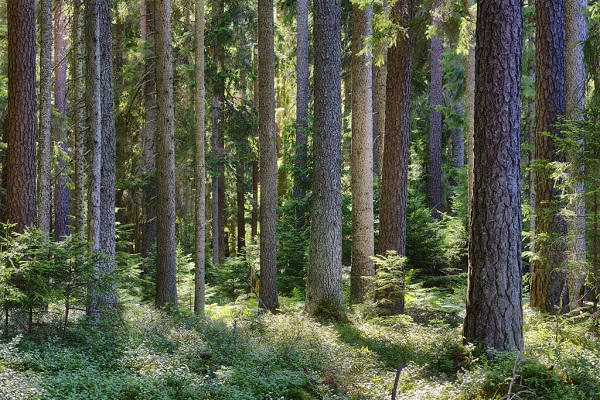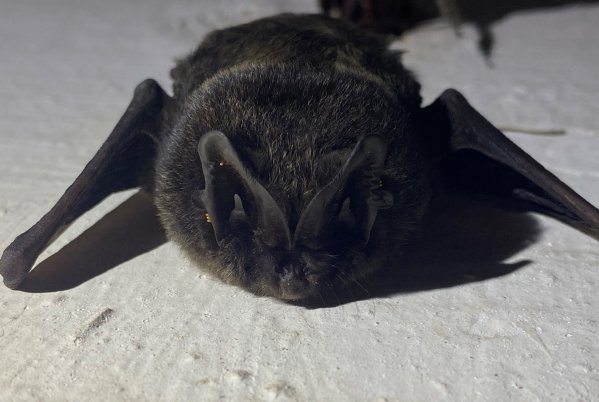LVM Designates a Protected Natural Area for the Protection of a Rare Species of Bats
In addition to the current specially protected natural areas and micro-reserves managed by JSC “Latvia's State Forests” (LVM), the company, in cooperation with the Nature Protection Board, has identified new areas that could also be included in the Natura 2000 network of protected natural areas of European Union (EU) significance. To protect the habitats of the western barbastelle (Barbastella barbastellus), which is a rare species in Latvia, LVM has designated a protected natural area “Koknese - Odziena” with an area of almost 8 000 hectares, which is one of the future potential Natura 2000 areas.
A protected natural area is defined to ensure the preservation of habitats of the western barbastelle, protected habitats of Latvian and EU importance and other specially protected species, as well as public education and recreation opportunities that do not conflict the protection of natural values.
“According to the opinion of experts, this area between Odziena, Koknese and Klintaine is the most important area in Latvia for ensuring the protection of the western barbastelle species; therefore, following the recommendations of the species protection plan, LVM, in cooperation with the Nature Protection Board and experts of the species, has worked on finding the best solutions in the territory of State forests and has also prepared a new wording for the individual protection and use rules of the protected natural area.
The LVM Vidusdaugava region is one of those areas in which the structures of wetlands are also relatively widely represented. One of the important aspects for the protection of these structures is the indivisibility of larger areas; therefore, in 2021 and 2022 we worked to identify areas that could potentially be included in the Natura 2000 network. In the LVM Vidusdaugava region, this extension amounts to more than 19 thousand hectares, which represents an increase of more than 40 % of the current territory. A significant possible extension of the Natura 2000 network in the LVM Vidusdaugava region will be formed by the protection area of the western barbastelle,” says Jānis Belickis, Head of Forest Management Planning of the LVM Vidusdaugava region.
The western barbastelle can be spotted in Latvia all year round and is relatively closely tied to its place of residence – as long as there are suitable winter and summer habitats and feeding places in the area, the territory used by this bat during the year is usually only a few tens of kilometres. However, the western barbastelle can fly further for the best wintering places.
“The new specially protected nature area includes both suitable summer and wintering areas, and it is an area where the species has been regularly observed in all seasons of the year since the end of the last century. So far in Latvia, swarming has been observed only in this area in autumn, which can be explained by possible mating and providing homes for the new generation, but for us this means that the bats have serious intentions for a permanent life in this area,” tells Ilze Kukāre, LVM Environmental Expert.
In the summer, the western barbastelle feeds in broad-leaved forests, parks, alleys, and water banks. During the day, they hide under dead trees, mostly pine bark, in tree crevices and sometimes in the roofs of buildings. The suitable habitats under the bark are temporary, they are used a few times, so it is important for the western barbastelle to keep creating new hiding places in the territory, and also to have suitable tree stands within reach that would ensure feeding. An important element during twilight is the various strips of trees that connect their places of residence with feeding areas and also provide a path to their wintering areas. In turn, during the darkest time of the night, the bat can also cross open areas.
By modelling various situations and looking for the best solutions, the total potential territory has been divided by creating zoning, where the protected landscape area is 4723 ha, the nature park area is 1432 ha, the nature reserve area is 1621 ha, and the regulated regime area is 69 ha. Each of these areas has a set of prohibitions or restrictions on activities both in time and space. For example, in the regulated regime zone, any wood harvesting is prohibited if it is not related to the special habitat tending measures; however, road maintenance, fire protection measures are allowed. In turn, in the nature reserve area, it is forbidden to build tents and light bonfires outside of specially established publicly accessible recreation areas and yards.
“In the general landscape area, there are areas with medium- and mature-aged spruce stands, which are also affected by the European spruce bark beetle this year. Therefore, when creating such protection zoning and determining the permissible activities in each zone, it is important to be aware that complete bans on economic activity significantly increase the risks – damage can also occur in neighbouring areas, including valuable economic forest. Therefore, under certain conditions, in the regulatory framework there should also be opportunities to prevent damage, if risks to the commercial forest are identified,” says Jānis Belickis.
More than 23 % of the total land area managed by LVM, which includes forests, swamps, agricultural lands, and waters, is managed by LVM with the purpose of nature protection. 12 % of the forest areas in this total area are nature protection areas, where forestry activities are prohibited by the laws of the Republic of Latvia. In turn, 8 % of economic forests are managed by LVM, on the company's own initiative, with additional conditions for environmental protection, recreation, and environmental knowledge, creating micro-reserves and protecting habitats.




